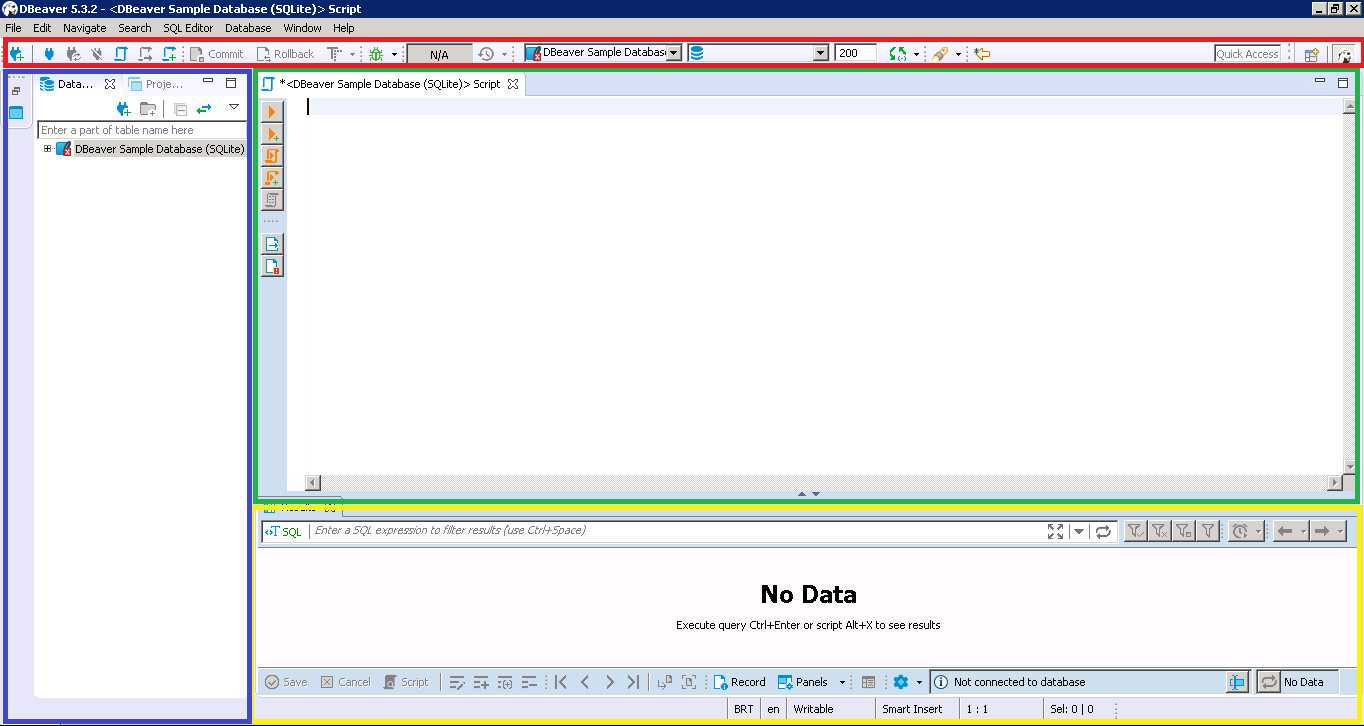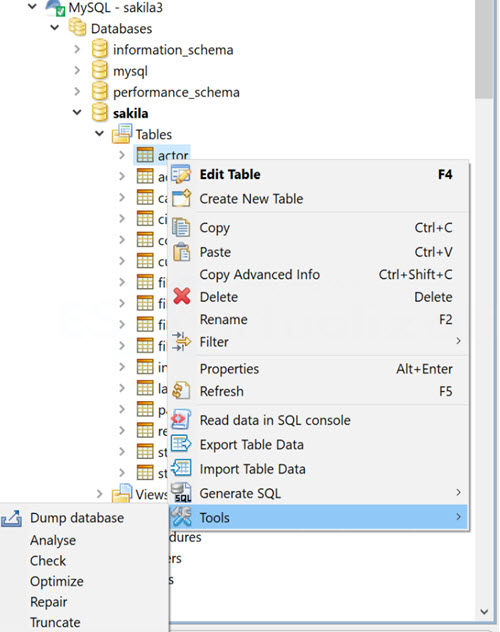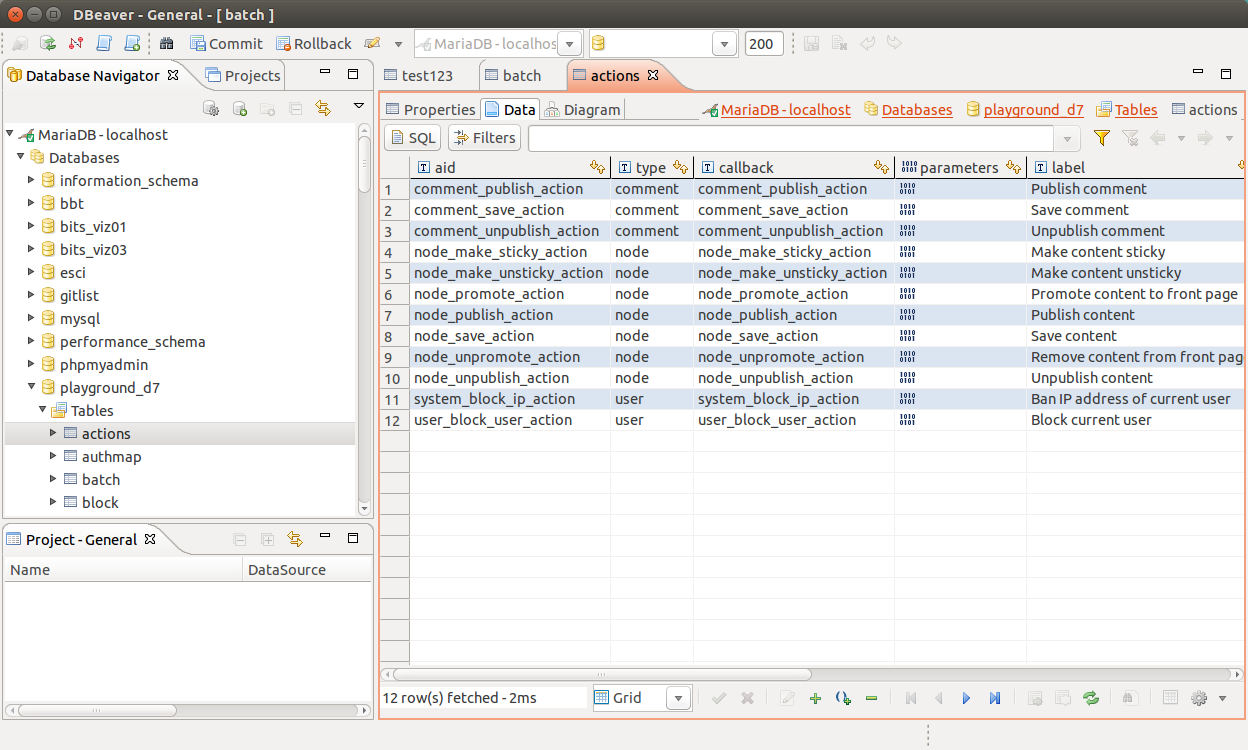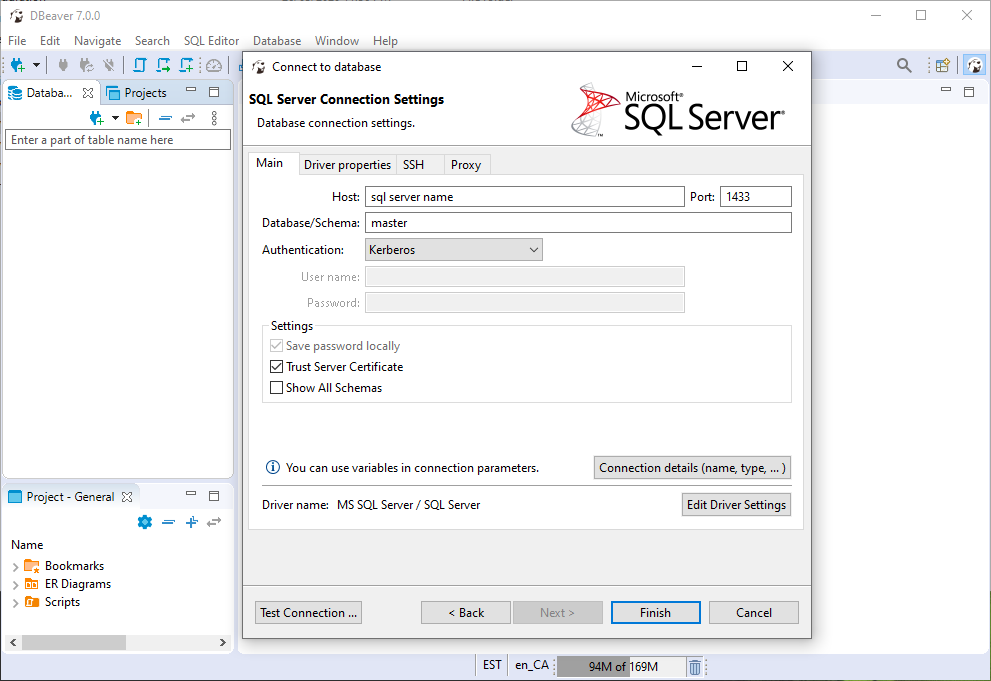

B is an index of result set of this query.

In other cases, tabs are named in a form of Results (), where: title: DBeaver is cool SELECT * FROM Album For example, after executing the following query you will see a single tab called Album (assuming that your database has a table called Album): To close all tabs of desired query, click Close all result tabs of same query on the context menu of this tab.Ī tab is often named after the primary table of your query.To close all tabs expect current, click Close all result tabs except this on the context menu of this tab.To close an individual tab, press CTRL+Shift+\ or middle-click on a tab header.These tabs are linked to the query they are executed from. If you execute a huge script with a large number of queries, it might causeĪ single query may generate several result sets represented by tabs. Each script query is executed in a separate thread (that is, all queries are executed simultaneously). The executes all queries in the script, but opens multiple result tabs. To execute a script opening each query results in a separate tab, press Ctrl+Alt+Shift+X or click Execute -> Execute Statements In Separate Tabs on the context menu or SQL Editor -> Execute Statements In Separate Tabs on the main menu or in the main toolbar. You can configure the script execution behavior in the SQL editor preferences (Right-click the script and click Preferences on the context menu). DBeaver parses queries one by one using a statement delimiter (“ ” by default) and executes them consecutively. This executes all queries in the current editor (or selected queries) as a script. To execute the whole script, press Alt+X or click Execute -> Execute SQL Script on the context menu or SQL Editor -> Execute SQL Script on the main menu or in the main toolbar. This executes the SQL query under the cursor or selected text and creates a new results tab. The same can be done using the main toolbar or the main menu: SQL Editor -> Execute SQL in new tab. To execute a query under the cursor in a separate tab, press CTRL+\ or right-click the query and click Execute -> Execute SQL in new tab on the context menu.

This executes the SQL query under the cursor or selected text and fills the results pane with the query results. You can do the same using the main toolbar or main menu: SQL Editor -> Execute SQL Statement. To execute a query under the cursor or selected text, press Ctrl+Enter or right-click the query and click Execute -> Execute SQL Statement on the context menu. Shortcut key combinations (see details further in this article) You can execute one query, a highlighted portion of a script, or a whole script.
#Dbeaver sql how to
How to set a variable if dbeaver.ini is read-only.
#Dbeaver sql driver

In statement mode it extracts current statement (it is statement where cursor is positioned and it is delimited by empty lines or by " " symbol). DBeaver has two modes of SQL execution: statement (CTRL+Enter) and script (ALT+X).


 0 kommentar(er)
0 kommentar(er)
